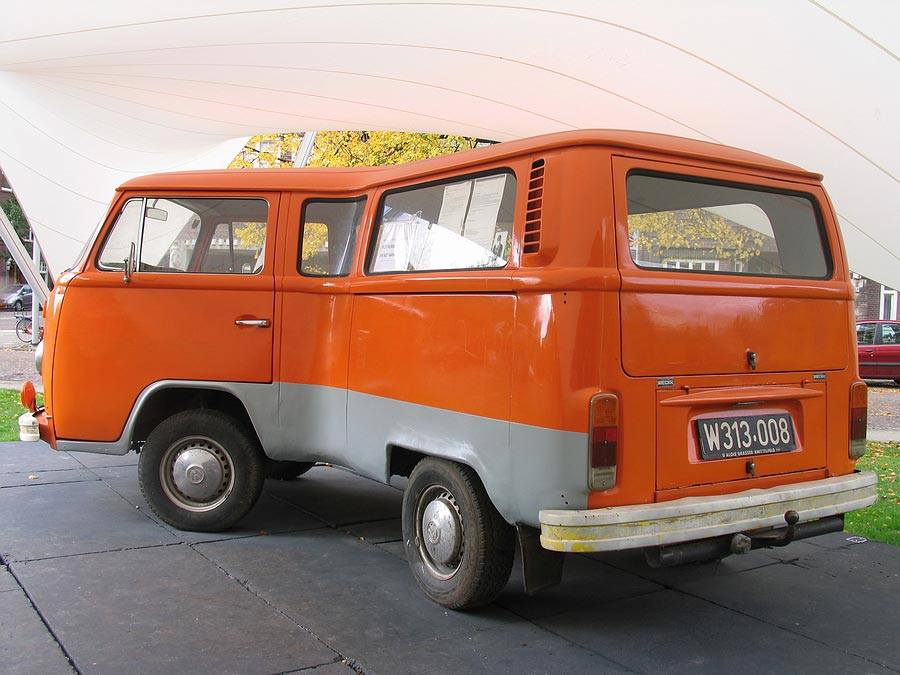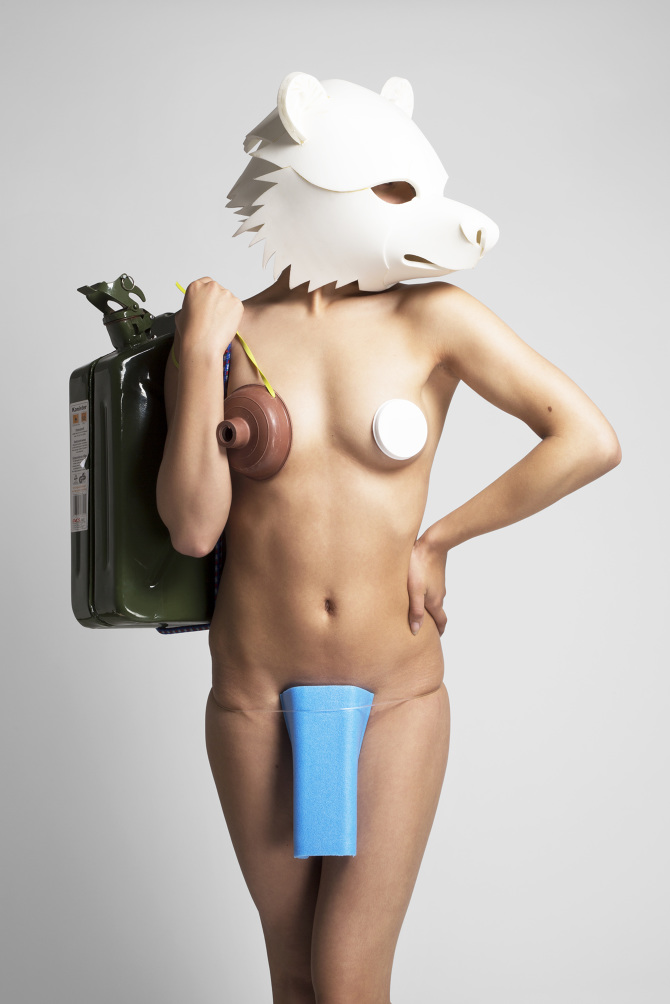


Robert Rauschenberg
Mud Muse
One of the show’s highlights is Mud Muse (1968-71), which is 1,000 gallons of bubbling Bentonite clay in a 12ft by 9ft (365cm x 274cm) tank.The work is also something of a technical feat in that it is listening to itself. The mud’s bubbles and spurts are measured by microphones, which in turn trigger a complex series of pumps to release more air and create more bubbling.

ALAN WARBURTON
Psychometrische
De laatkapitalistische netwerkcultuur is geobsedeerd door het verbeteren van prestaties. TED-sprekers zijn cultidolen en delen hun geboden voor succes en productiviteit. Op sociale netwerken worden onze vrienden merken en merken worden onze vrienden. Zelfhulpboeken zijn uitwisselbaar met bedrijfsfilosofieën. In de vergaderzaal – en de weekendbijlagen – leren we onszelf vorm te geven, consequent te zijn, te opereren. Entropie verminderen. Maximaliseer de consistentie. Word een industrie van één. Je bent een motor. Op een dag vlieg je weg.

PHILLIP K SMITH III
Piegato Parallelamente
La monumentale installazione di Phillip K. Smith III Bent Parallel avvolge gli spettatori di luce, continuando il dialogo continuo dell’artista con la teoria del colore, l’ottica, la scala e la tecnologia. Apparendo come due pareti di campi di colore che si intersecano, la struttura a cerniera fonde le superfici per generare una percezione di spostamento e fusione. Crea un terzo piano, privo di materiale, a spessore zero, che mescola i colori adiacenti e sembra estendere i confini fisici dello spazio. L’ambiente che ne risulta appare allo stesso tempo infinito e finito.

Gwyllim Jahn & Cameron Newnham +Soomeen Hahm Design +Igor Pantic
Steampunk Pavilion
Steampunk is a pavilion constructed from steam-bent hardwood, designed by Gwyllim Jahn, Cameron Newnham (Fologram), Soomeen Hahm Design and Igor Pantic for the 5th edition of Tallinn Architecture Biennale.
“Steampunk explores a path to rethink applications and traditions of craft in pursuit of their evolution.” Soomeen Hahm Design
“The structure challenges the idea of the primitive hut –showing how, by using algorithmic logic, simple raw materials can be turned into a highly complex and inhabitable structure”.Gilles Retsin

Joanie Lemercier and James Ginzburg
Nimbes
L’artiste Joanie Lemercier, spécialiste des arts audiovisuels, a INSTALLÉ au SAT de Montréal (Society for Arts and Technology), des oeuvres visuelles et auditives immersives qui surplombent et entourent les spectateurs à 360°. Pour réaliser celles-ci, il a utilisé la technologie numérique, des lasers et appareils de projection. L’exposition « Nimbes » dure une quinzaine de minutes, et guide le spectateur à travers un univers virtuel parsemé de constellations, de paysages naturels et d’immeubles qui s’effondrent. C’est le fruit d’un travail considérable, qui mêle savamment photographies et images de synthèse.

Elmgreen & Dragset
Bent Pool
German artists Elmgreen and Dragset have installed a sculpture that looks like an U-shaped swimming pool outside the Miami Beach Convention Center[…] Curved pieces of aluminium were used to create the unusual structure, with the two ends resting atop a concrete plinth. “Bent Pool is shaped like an inverted “U” and stands upright on a two-tier plinth,” the studio said. “The pool seems to have somehow been lifted out of the ground and stretched into a curved form.”
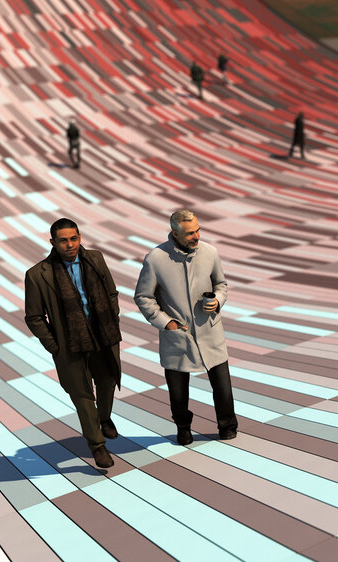
South Georgia Heritage
NEON – Fantastical Architecture, Art and Design
FROM DARKNESS TO LIGHT
South Georgia Heritage Trust launched an open call for a site-specific commission to be located on Grytviken the former whaling station of sub-Antarctic Island of South Georgia. The project was required to celebrate the whale through a reinterpretation of the former Flensing Plan (a large timber deck used to process the captured whales) and offer a message of hope for future generations by demonstrating how humankind can move from exploitation to conservation. Our proposal imagines that the deck of the Flensing plan has been cut like a piece of flesh from the ground and bent upwards to form an arc. The timber deck is replaced with concrete pavers which are coloured based on the activities which took place in the sites past and present (whale processing and whale watching). The coloured pavers are positioned to create a gradient which provides the visitor with a visual representation of the way the site has changed over time.
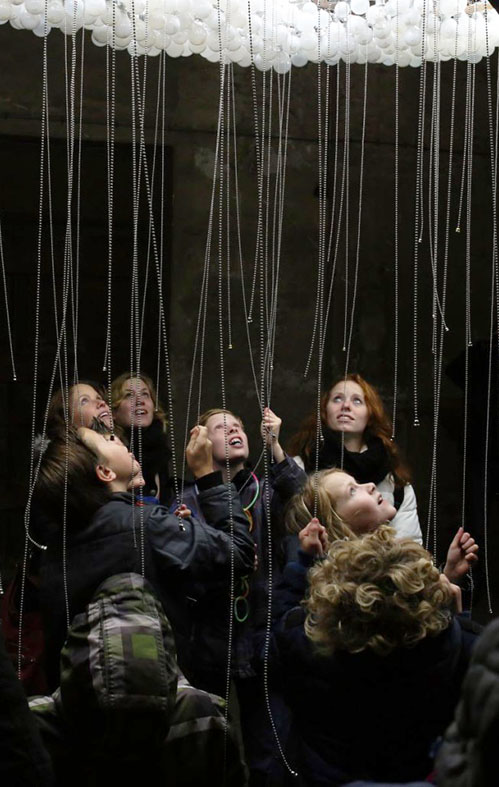
Caitlind r.c Brown & Wayne Garrett
Cloud
The hand-bent steel substructure of the sculpture is covered in a skin of incandescent light bulbs (new and burnt out), and rear-lit from within by 250 compact fluorescent bulbs, pulling a total power of approximately 20 amps (the equivalent of two household outlets ).Each of these bulbs is attached to a pull-string, allowing viewers to control the illumination of the structure – like lightning in the CLOUD above them.

Carl Kleiner
Карлом Кляйнером
Tulips Postures
Carl Kleiner creates sleek editorial content for fashion and lifestyle brands, and that sensibility shows in his photo and video series Postures which features artfully arranged tulips. Using minimal metal rods, bent at strategic ends and angles, Kleiner showcases the graceful curves of the flowers’ long necks and gently ruffled petals and leaves. A further sense of movement is instilled through the stop-motion video, which combines still photos of the blossoms’ subtle changes into a dramatic dance.

LUCIO FONTANA
Spatial Environments with neon
Ambiente spaziale con neon
Fontana’s “Spatial Environments” are considered the most innovative outcome of the theories about space that Lucio Fontana first expressed in his Manifiesto Blanco of 1946. Here and in later manifestos, he described a new form of visual representation linked to space and time, which would move past the classic materials of sculpture and painting and employ modern technology to create “artificial forms, rainbows of wonder, words written in light” […] Ambiente spaziale con neon had a single red bent neon hanging from the ceiling in a room covered with pink fabric.

Florian Schneider
Kraftwerk
Florian Schneider
Electronic Poem
Poem dedicated to synthesizer Doepfer A-100
” Analogsynthese mit system
klanglich, optish angenehm
technisch, logisch, funktionell
prototypisch und speziell
modular und variabel
leicht, kompakt und transportabel
für ein musikabenteuer
A-100, nicht zu teuer
midi-kontrolle vom computer
A-100 to the future! ”

Wade Kavanaugh and Stephen B Nguyen
Hubris Ate Nemesis
Curvy and bent wooden strips are laid out to resemble a wave in this installation in Maine, created by local designers Wade Kavanaugh and Stephen B Nguyen. Kavanaugh and Nguyen designed the Hubris Atë Nemesis installation for the Center for Maine Contemporary Art (CMCA), taking cues from the from the rough waters and wind in Maine. Long, timber strips are layered across the floor and up the ceiling to fill the open-plan gallery space, with crests curling over entrances to other parts of the contemporary art gallery.
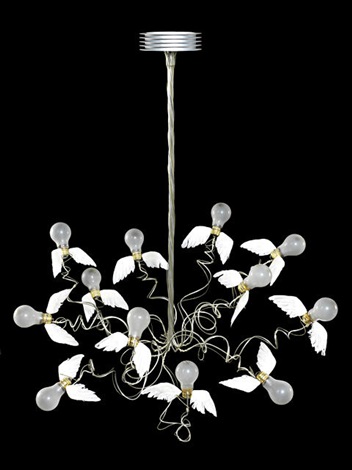
Ingo Maurer
Birdie
The original Birdie suspension lamp was designed by Ingo Maurer himself in 2002. Birdie is the smaller version of the Birds Birds Birds chandelier and is suited for ceiling heights of 230 to 260 cm. With 12 halogen low-volt bulbs, extra produced by Ingo Maurer, and handmade wings of goose feathers this lustre becomes an extraordinary design lamp. The individual wires can be turned, bent and shaped whichever way you like.
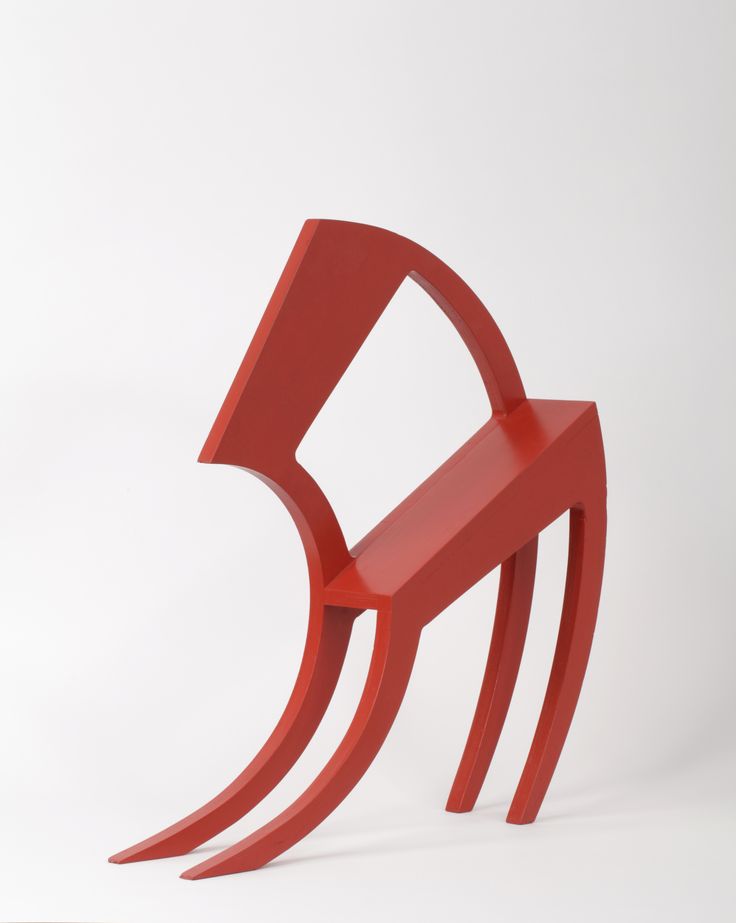
Stefan Wewerka
Class room chair
Polyfunctionality and deconstruction of everyday objects, irony and humour as weapons and moments of profound insight: these are some of the ideas behind the works by the architect, designer, sculptor and film-maker, Stefan Wewerka (born in 1928, in Magdeburg).
In his works, Wewerka pushes against conventional concepts relating to art and aesthetics, rationalism and functionalism. As a result for instance, the Last Supper is turned into a weird affair, the kitchen space turned into a kitchen tree. Wewerka’s unmistakable trademark is the manipulation of chairs. Sawn, hacked and bent out of shape, these chairs subversively thwart previously unquestioned concepts relating to furniture. In stark contrast to this, however, are his sculptural furniture designs, adapted to suit the requirements of the human body and its habits.
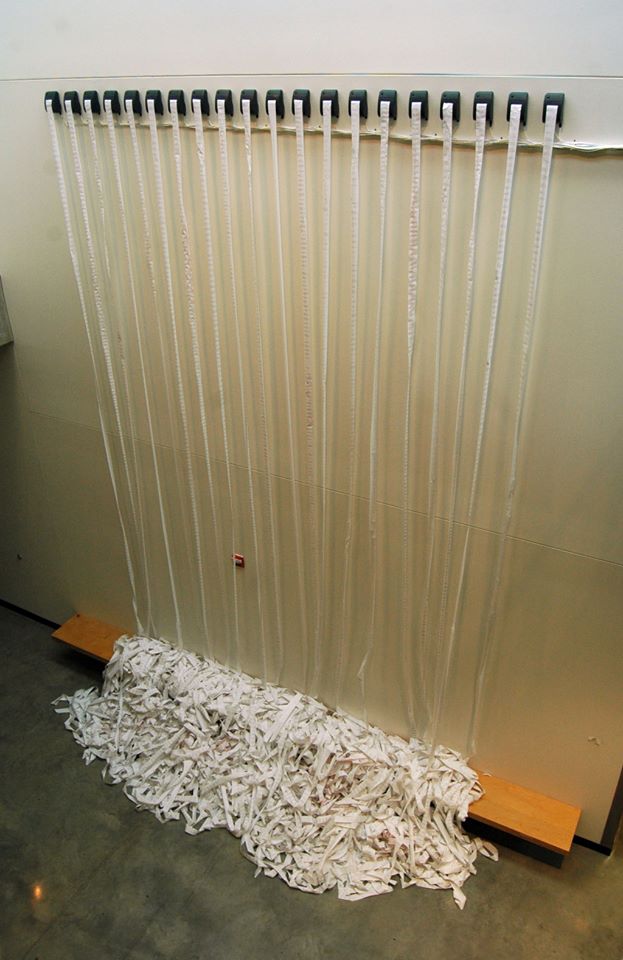
CHRISTOPHER BAKER
Murmur Study
Murmur Study (ou l’étude des murmures) est une œuvre d’art originale qui propose une réflexion autour de l’art et du web. Elle a été réalisée par Christopher Baker, Márton András Juhász et Budapest Kitchen, et se veut être un observatoire des technologies de micro-blogging comme Twitter et les status Facebook. L’installation est composée de 30 imprimantes thermales qui impriment en continu des messages Twitter récoltés aux quatre coins de la planète. Les messages tombent des imprimantes comme des chutes d’eau avant de venir s’empiler par terre.
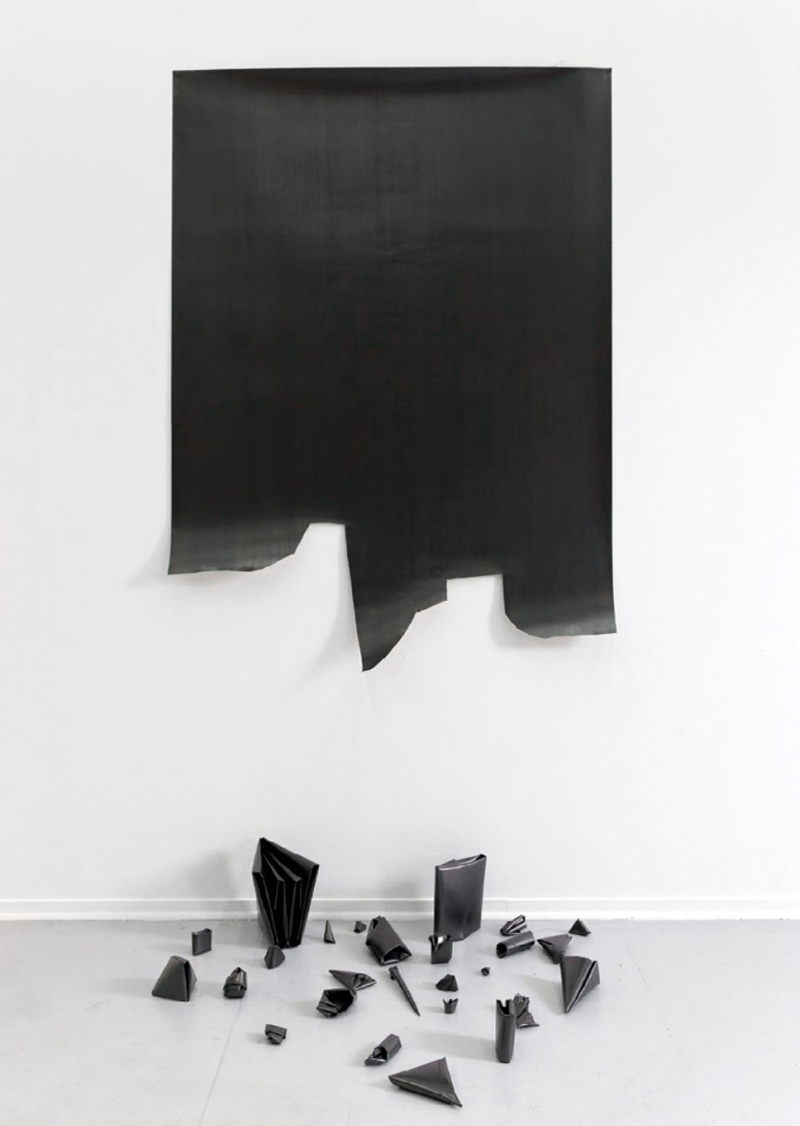
DIOGO PIMENTÃO
For ten years, Diogo Pimentão seeks to open the horizon of the drawing and its conventions to other dimensions, other processes and other tools. The act of drawing involves a relationship with him close to the body choreography, which determines the scale of the work: papers mechanically bent by hand to the major compounds of monochrome black lines drawn by the body in motion.
Therefore, the paper or the wood surface no longer appears as flat surface but as a flexible plan, foldable, stretchable, may become volume.

Asger Carlsen
アスガーカールセン
Асгер Карлсен
The work of Danish-born artist Asger Carlsen is a relatively irreverent take on photography. Bodies are bent and contorted through studied post-processing, and scratch at the border of anthropomorphic figuration and abstract form. Originally a photojournalist – and, for a brief stint, a crime scene photographer – in Denmark, Carlsen moved to New York to work as a commercial photographer.


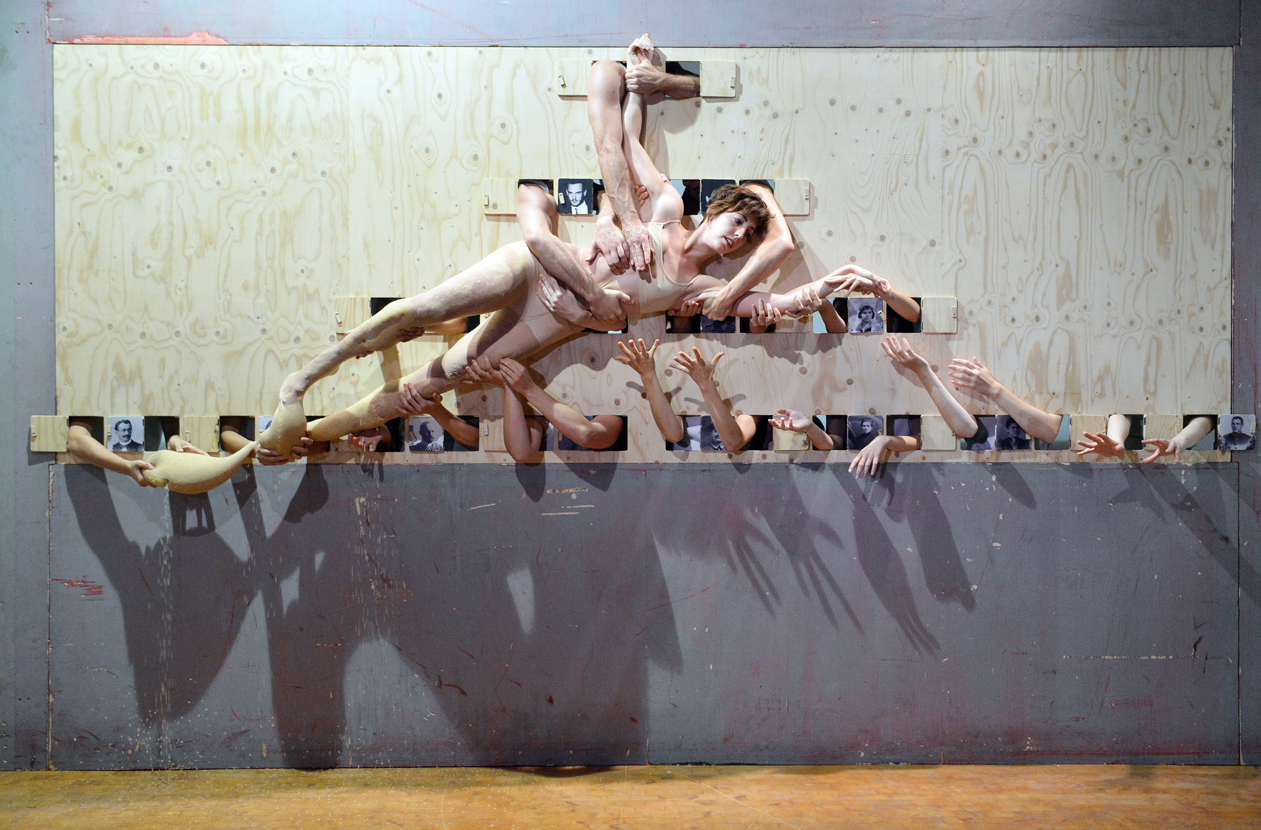
Sasha Waltz
insideout
Mit „insideout“ verwirklicht die deutsche Choreografin Sasha Waltz ihren lang gehegten Traum (ein Großprojekt), eine Produktion zu machen, die den Zuschauern uneingeschränkte Bewegungsfreiheit bietet. Unzählige Aktionen in Tanz, Musik und Bild finden gleichzeitig und auf verschiedenen Ebenen statt. Es liegt an den einzelnen Zuschauern, ihren eigenen Kurs zu bestimmen. Ein sehr unterhaltsames und aufregendes Abenteuer vor Ort! Jede Szene erzählt eine bewegende Geschichte, manchmal lustig und grotesk, manchmal autobiografisch. Der Choreograf ging wie immer von einer intensiven Sozialforschung aus. Dieses Mal führte sie Interviews mit ihren eigenen Tänzern und fragte sie nach ihren verborgenen Geschichten, nach ihren Familien und Hintergründen. Die Produktion bietet ein Kaleidoskop von Lebensgeschichten, Emotionen und Erinnerungen. Die Originalkomposition von Rebecca Saunders wird live von musikFabrik, dem renommierten deutschen Ensemble für zeitgenössische Musik, aufgeführt.



Alicja Kwade
Die Gesamtheit aller Orte
“It’s easy to trace the curves in Kwade’s perfectly placed bent tubing and piping, but it takes a second to realize that even the installation’s larger, solid objects—a door, a window, mirrors, iron gates, sheets of metal, and even a bicycle—not only travel on her orbits’ paths, but have also been altered (in some cases just barely) to conform to them. The white door’s slight curvature is hardly noticeable until you’re at close range. The imposing rusty gates are generously rounded. There’s an almost imperceptible bend to a door with an oval mirror. A few copper pipes in the outermost rings disappear into the gallery wall; in the very center of the installation, a two-euro coin, propped up on its rim, and a sharply curved sheet of metal face each other, mysteriously.”Kimberly Bradley

ANNA WILKINSON
Sculptural Simulacrum
“..Inspiration for this project comes from digital sculpture that created by sculptors who use specialized software to create their work.
In my literature review, I was fascinated to learn how much engineering and math are often involved in digital sculpture and to learn that the process of digital sculpturing has many similarities to pattern making which also relies heavily on mathematic, angles, and precise measurements…” “…One of the most inspiring digital sculptors for me was “Basheba Grossman”. I enjoyed many of his pieces, but was especially inspired from his digitally created bronze knots. In addition to the precise geometry of the knot sculptures, something which, even with the naked eye, it’s apparent that the knots are precise symmetrical pieces. What is also fascinating about the knots is that they exist simultaneously as different shapes that still occupy a single space! Collectively the knots form a sphere, or suggest a cycle or globe, yet the components of the knots are often more like bent stretching disc or arms. The knots have no visible foundation, it is impossible to see where the “starting point” and the “ending point” or even the edges of the sculpture exist..”
